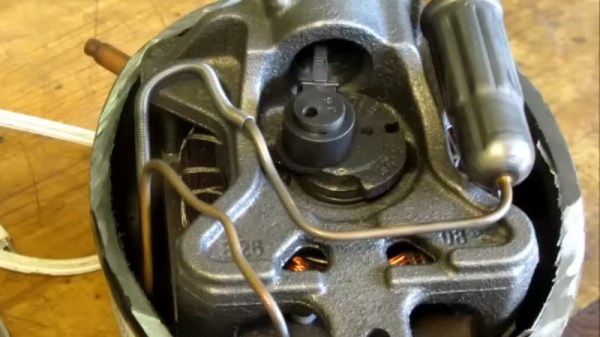Probably one of the most reliable devices you will have in your house is the refrigerator, as its compressor has the minimum of moving parts and carries its own lubrication. It’s not uncommon to find fridges many decades old still in use, and fridges are far more likely to be discarded due to broken fittings rather than a failed compressor. An interesting teardown of a failed fridge compressor comes from [turbokinetic], who gives us a professional analysis of how shortcomings in its construction caused it to fail. It’s both an opportunity for a look at the inside of a fridge compressor, and a commentary on the quality of consumer grade hardware.
Electrically the unit seemed unhurt, but the motor wouldn’t pump anything. Cutting the lid off revealed the motor, and it was soon established that the bearing had failed. As the teardown proceeded the conclusion was that the fault lay in the oil being too low viscosity. The designer had picked a very light oil in pursuit of low friction for lower energy consumption, but had ended up with one too light to provide adequate coverage within the bearing. The compressor has a lifetime of around ten years baked into it from manufacture, whether the designer intended it to or not.
You can see the full video below the break, but meanwhile this isn’t the first fridge compressor we’ve seen.
Continue reading “Fridge Compressor Teardown Reveals Engineering Compromises”
















